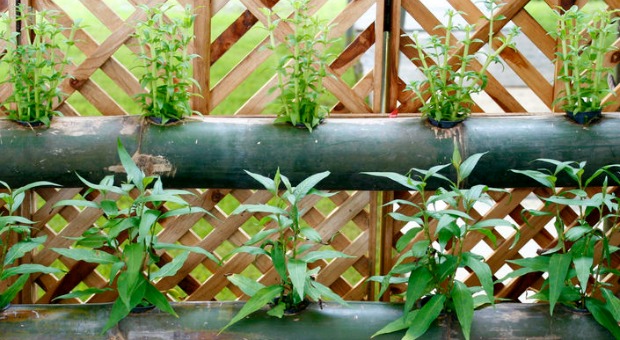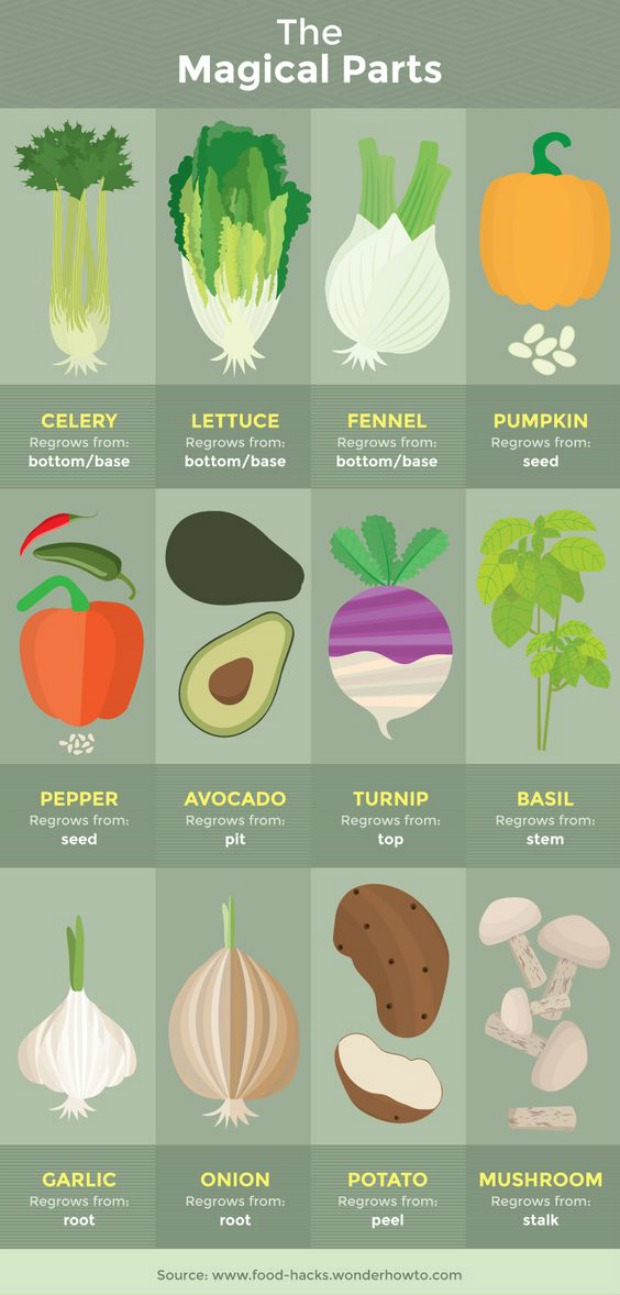As preppers, we all share the common goal of being able to take care of ourselves and our families in worst-case scenarios.
Having a ready supply of nutritious food is most certainly at the top of that list. And since we don’t all have the acreage (or even the yard) to grow a huge, traditional garden, enter vertical gardening!
Vertical gardening is exactly what the name implies – you’re growing your plants vertically instead of on a flat surface (the ground). This is great because it allows for growing fresh produce even if you don’t have any space other than a wall or a porch. You can even grow a vertical garden inside!
Grows Anywhere
Whether you have a fence around your yard or you only have a space on the porch or even a wall inside your house, you can grow a vertical garden. Living in urban areas doesn’t mean that you can’t grow your own food – it just means that you have to get creative about it.
If you have even a little bit of a yard, you’ll be surprised how much you can grow using the vertical gardening method – the options are practically limitless. You can even grow plants out the top AND bottom of the planters!
If you only have a single closet or small wall in your apartment, you’re still in luck, though you’ll have to make sure that you have plenty of light either in the form of sunlight or grow lights. Herbs are great to grow vertically, as are tomatoes, strawberries, peppers, onions, and green leafy vegetables.
Can be Used for Privacy
If you have a porch or yard, build your vertical garden in such a way that you block vision of your house. If you use a solid back that faces out from your house, people won’t even know what you’re doing!
Of course, you may not want to advertise what you’re doing, so grow it somewhere that people can’t look over your fence.
Works Well with Hydroponics
Growing plants hydroponically is a great way to increase your produce yield while decreasing your water consumption. It also takes the guesswork out of what you’re exposing your plants to, and how many nutrients the plant is getting, because you control both of those conditions.
Plants grown hydroponically have been shown to be healthier, grow faster, and produce a bigger yield. This is likely because water is oxygen rich, which helps the plants absorb nutrients, and they don’t have to harvest the nutrients out of the soil, so they can use that energy to grow instead.
You can Grow without Sharing What You’re Doing
Because you don’t need to lay everything out in the yard, you can grow in places that your neighbors won’t know about. You can grow a ton of vegetables on vertical growing racks inside your house. If you decide to go with a hydroponics system, you won’t have a dirt mess, but you can grow them in soil just as well.
Other places that make good hiding places include old sheds or barns that back up to a place in your yard that’s out of site. Just remember that you need plenty of light no matter where you plant them.
Grow Year Round
If you decide to grow a vertical garden inside, you can have year-round fresh herbs, veggies, and fruits. They do well in greenhouses, too. This is yet another advantage you’ll have over your neighbors if stuff goes south in the winter.
You’ll have access to fresh produce right there in your guest bedroom. Don’t be shy about putting a vertical garden in your living room, either. They look beautiful and make the house smell good, especially if you’re growing herbs.
You can Grow a Variety of Produce
The good thing about growing up instead of out is that you can have 7 or 8 different types of plants in an area that’s only 8 feet long and a foot or so wide. Nearly everybody has that much space!
An advantage to this is that if you don’t have access to a good food supply, having several different types of plants growing in what space you have will allow for you to have a variety of nutrients. Go for different colors because each color has different nutrients – red, yellow, orange, green – they all provide different nutrients that will help keep you and yours well-nourished.
Easy to Care for by Anybody
It’s hard to get down on your hands and knees to root around in a garden, pulling weeds in the sun and making sure the soil stays loose. With vertical gardening, it’s all right there in front of you. You can sit on a chair to take care of your plants if you need to. And harvesting is easy, too. For that matter, if you plan it right, you can make your vertical garden portable.
Another way that vertical gardening is easier is that, especially if you’re growing hydroponically, there are minimal weeds and you don’t have to worry about squatting over to take care of your vining plants.
Less Waste
This is one of my favorite reasons to grow vertically – the plants aren’t dragging on the ground and the fruits aren’t sitting in dirt, so they aren’t as prone to disease and rot.
There’s nothing worse, in my opinion, than working hard to nurture plants all the way from seed to harvest just to lose part of it because it was tucked under leaves where we couldn’t see it, and rotted. That’s not a problem with vertical gardening.
I’m obviously a fan of vertical gardening because of where I currently live and have benefited from it myself.
Remember that every survival plan should have food at its core.
Do you wonder what where the cooking secrets that helped our grandfathers survive the Great Depression? Click the banner below to uncover them!
This article has been written by Theresa Crouse for Survivopedia.





































































